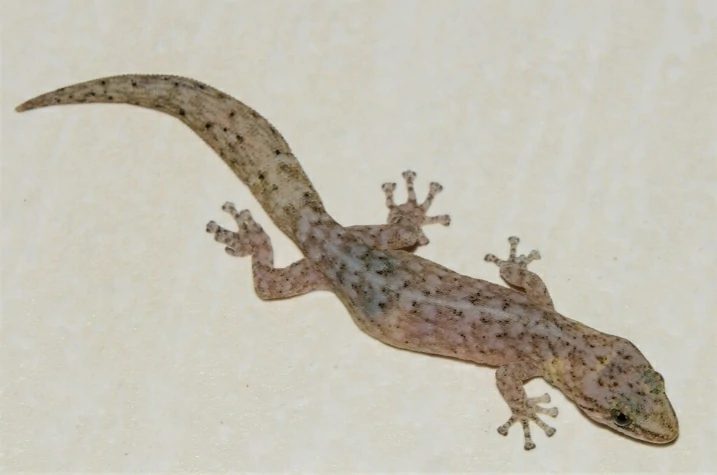Have you ever watched a gecko creep effortlessly up a glass tank wall, then suddenly walk upside-down on the ceiling? It looks almost magical, like gravity doesn’t matter. You might wonder, how do geckos climb on everything?
Geckos can climb almost any surface because of tiny structures on their toes called setae. These hairs use something called van der Waals forces to stick to surfaces. It’s not glue or suction, it’s a natural trick their bodies evolved over millions of years. Their feet are perfectly made for climbing everything from glass to tree bark.
Why Geckos Are Famous for Climbing
Geckos evolved to live in places where climbing is important. Forests, rocky deserts, and even cities all need them to be agile. They climb to catch insects, escape predators, and find shelter.
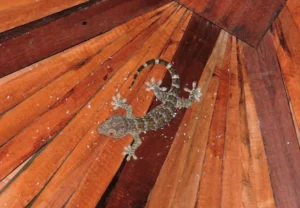
Climbing isn’t just a cool trick, it’s a survival tool. Imagine a gecko running from a predator. Being able to scale a wall or cling to a ceiling could be the difference between life and death.
Even in captivity, geckos still feel the urge to climb. Glass, plastic, or smooth wood, they turn everything into a playground because their feet are built for grip.
The Secret: Setae on Gecko Toes
The magic happens at a tiny level. Each gecko toe has thousands of small hair-like structures called setae. Each seta branches into hundreds of even smaller tips called spatulae.
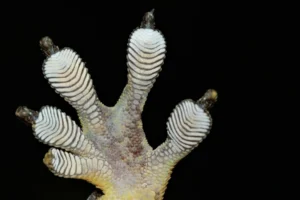
These spatulae are so tiny that they connect with the molecules on surfaces using van der Waals forces. Basically, the molecules on the gecko’s feet slightly attract the molecules on the surface, making enough grip to hold their weight.
Even though one tip is weak, having millions across all toes adds up. That’s how a gecko can walk upside-down on glass without falling.
How Do Geckos Stick and Unstick Instantly?
One of the coolest parts is how geckos stick and unstick so fast.
-
To stick: the toes press down and flatten, increasing contact with the surface.
-
To move: the toes peel off from the back, like taking tape off a surface, letting them move smoothly.
This method uses very little energy. Geckos can cling to walls or ceilings for hours without getting tired. Their feet are both sticky and flexible, a natural climbing machine.
How Gecko Toe Pads Work on Different Surfaces
Geckos don’t just climb smooth glass. Their sticky feet work on:
-
Rough bark – tiny hairs bend and grip uneven surfaces.
-
Leaves – flexible toe pads grab edges or waxy surfaces.
-
Walls and ceilings – van der Waals forces handle smooth plastic or glass.
Their toes adapt to almost any surface. The same foot can climb rocks, trees, or man-made things without adjusting much.
How Gecko Toe Structure Differs by Species
Not all geckos climb the same way.
-
Tokay geckos – big, strong toe pads for climbing tropical forest trees.
-
Crested geckos – smaller pads but flexible toes for gripping leaves and branches.
-
Leopard geckos – smaller toe pads with claws for desert environments; they climb less but can still scale walls in captivity.
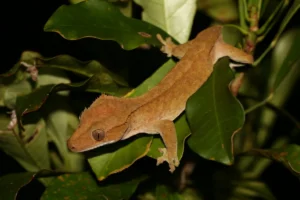
Evolution shapes their toes depending on their environment and lifestyle.
Do Geckos Ever Climb with Their Claws?
Many people think geckos climb with claws. Claws help on rough surfaces, but smooth wall climbing is all setae and van der Waals forces.
Claws are mostly for digging or gripping rough ground. Climbing upside-down on glass? That’s all about the microscopic hairs on their toes.
How Geckos Balance While Climbing
Climbing isn’t just sticking, it’s also about balance.
Geckos have long tails and flexible bodies that act like counterweights. When they hang upside-down or climb, the tail keeps them steady, stops them from tipping, and lets them move slowly or quickly without slipping.
Some geckos even use their tails to push off surfaces or pivot mid-climb. Their tail is a key part of their climbing system.
Why Don’t Geckos Slip?
It might look risky, but geckos almost never fall. Their toe pads work so well that gravity is barely a problem.
Even on smooth glass, they can hold their whole body weight with just a few toes.
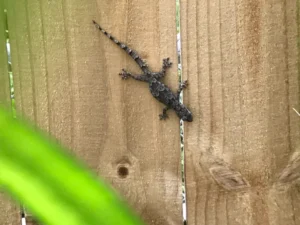
They also move carefully, usually one foot at a time, spreading their weight evenly. Quick jumps are precise because they know exactly how far their pads can stick.
Can Geckos Climb Wet Surfaces?
Yes, but water can reduce grip. Too much moisture on glass or leaves can weaken van der Waals forces. That’s why a gecko might slide a little on a wet tank wall.
Still, their feet are amazing even with some humidity. Many tropical geckos live in rainy environments, so their toe pads are flexible enough to handle wet surfaces.
Wild vs Captive Geckos: Their Climbing Skills
In Madagascar, day geckos climb wet leaves and mossy trees easily. They move silently, hunting insects and sipping nectar while hanging upside-down.
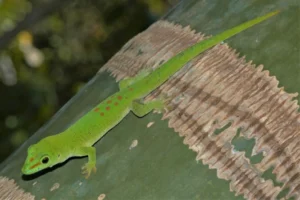
Their toe pads let them cling in rainstorms or on slippery leaves.
Pet geckos in tanks show the same skills. They crawl up glass walls, hang under lids, and cling to decorations with smooth surfaces.
Watching them is like seeing a tiny acrobat. Sticky toes, a flexible body, and a balancing tail make movement that looks almost impossible.
How Geckos Can Jump and Climb at the Same Time
Some geckos don’t just climb, they jump between surfaces. When leaping from a branch to a wall, they time it so the sticky pads touch exactly when they land.
Their toes spread and flatten mid-air, sticking immediately. This shows how climbing and jumping work together.
Why Climbing Ability Is a Survival Advantage
Being able to climb anything helps geckos get food, stay safe, and find mates.
-
They can escape predators by scaling walls.
-
They can hunt insects on ceilings or high leaves.
-
They can hide in spots other animals can’t reach.
Climbing isn’t just a party trick, it’s central to their survival.
Common Misconceptions About Gecko Climbing
-
Myth: Geckos use glue. Reality: it’s van der Waals forces.
-
Myth: All geckos climb equally well. Reality: some species are better than others.
-
Myth: They can climb in water. Reality: water reduces grip, so they may slip.
Knowing the science behind their feet makes them even more amazing.
Conclusion
So, how do geckos climb everything?
It’s a perfect mix of biology, physics, and evolution. Their toe pads are covered in millions of microscopic hairs that stick using van der Waals forces.
Flexible bodies, counterbalancing tails, and precise movement let geckos scale walls, cling to ceilings, and jump across gaps.
In the wild or in a tank, their climbing skill isn’t just impressive, it’s necessary for survival. A gecko’s feet are one of nature’s most amazing inventions, letting them live life literally on every surface.
Hi, my name is Ezra Mushala, i have been interested animals all my life. I am the main author and editor here at snakeinformer.com.

